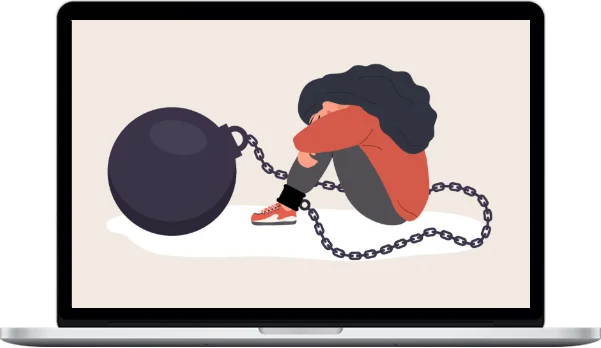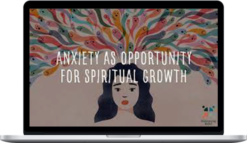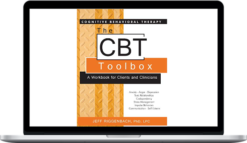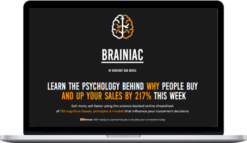NICABM – How To Work With Negative Self-Narratives That Sustain Suffering
$97.00 $49.00
Total Sold: 1
»Instant Delivery
Description
NICABM – How To Work With Negative Self-Narratives That Sustain Suffering
Reexamining the Stories We Tell Ourselves
How to work with the narratives that sustain your client’s suffering
Inside every client lives a story about who they are — a story shaped by early experiences, trauma, and the meanings they’ve made along the way.
But sometimes, that story can feed into patterns of self-blame, rigidity, and despair.
So, we asked 27 leading experts to share their best strategies for transforming stories that sustain suffering into stories that support healing. And in this course, they’ll show you how to:
- Gently loosen rigid thought patterns (while honoring your client’s lived experience)
- Navigate moments when new insights collapse back into old narratives
- Help your client understand why the mind clings to painful self-beliefs
- Create new stories that foster compassion, resilience, and agency
Because when clients can tell a new story about who they are, lasting healing can begin. Presenting:
How to Work with Negative Self-Narratives That Sustain Suffering
How to Work with Rigid Self-Narratives That Clients Feel Powerless to Change
Michael Yapko, PhD Shelly Harrell, PhD
Christine Padesky, PhD Melanie Greenberg, PhD Bill O’Hanlon, LMFT
- An Experiential Exercise to Help Broaden the Scope of a Client’s Narrative
- A Mindfulness-Based Approach to Help Clients Envision Themselves Untethered from a Rigid Narrative
- How to Skillfully Help Clients Understand the Costs of Their Rigid Narratives (and the Benefits of Rewriting It)
- One Strategy to Use When Clients Revert Back to a Harmful Narrative (Even After Making Some Initial Progress)
How to Work with Trauma-Based Self-Narratives
Bessel van der Kolk, MD Stephen Porges, PhD
Bonnie Goldstein, PhD Deany Laliotis, LICSW Rick Hanson, PhD
- One Specific Consequence of a Trauma-Based Narrative (and Psychoeducation That Can Help Deflect It)
- A 3-Step Process to Work with Trauma-Based Narratives That Make Suffering a Self-Fulfilling Prophecy
- How to Help Clients Step into a New Narrative (Even After Trauma Made It Feel Impossible)
How to Work with Self-Narratives That Are Tied Directly to a Diagnosis
Lynn Lyons, LICSW Ron Siegel, PsyD
Bill O’Hanlon, LMFT Judson Brewer, MD, PhD Kelly McGonigal, PhD
- Why More Clients Are Taking on Diagnoses as Part of Their Identity
- Practical Strategies to Create Distance Between Your Client’s Identity and Their Diagnosis
- The Specific Costs of Having an Identity That’s Bound Too Tightly to a Diagnosis
- Why Some Clients Cling to a Diagnosis-Based Identity (Even After They’re Aware of the Harmful Consequences)
Strategies to Help Clients Create More Positive Self-Narratives
Steven Hayes, PhD Peter Levine, PhD
Christine Padesky, PhD Kelly McGonigal, PhD Judson Brewer, MD, PhD
- How Small Action Steps Can Help Create a More Positive Narrative (and a 5-Step Process to Help Clients Begin Making Those Steps)
- Why Reward-Based Learning Can Be Uniquely Suited to Help Rewrite Harmful Narratives
- Mindfulness Research That Can Help Direct Your Work in Shifting a Client’s Narrative
- One Strategy to Help Clients Write a More Positive Story About Their Future
A Parts Approach to Address Conflicting Self-Narratives
Richard Schwartz, PhD Dan Siegel, MD David Wallin, PhD
- How to Help Clients Make Sense of Multiple Narratives Competing for Dominance
- An Internal Family Systems Approach to Help Mediate Between Conflicting Narratives
- Case Study: How to Uncover and Work with a Client’s “Sub-Narratives”
Important Precautions for Working with a Client’s Self-Narrative
Miguel Gallardo, PsyD Deany Laliotis, LICSW
Zindel Segal, PhD Pat Ogden, PhD
- Specific Missteps That Can Push Clients Deeper into Their Narratives (and How to Avoid Them)
- How to Balance Between Invalidating and Over-Validating a Client’s Narrative
- Strategies to Help You Remain Calm and Effective When a Client’s Narrative Feels Overwhelming
- One Critical Assumption About Self-Narratives to Avoid
Strategies to Untangle the Origins of Your Client’s Painful Self-Narrative
Steven Hayes, PhD Deany Laliotis, LICSW Melanie Greenberg, PhD
Judson Brewer, MD, PhD Kelly Wilson, PhD Ron Siegel, PsyD
Rick Hanson, PhD
- Questions to Help Pinpoint the Origin of a Client’s Narrative
- Why the Specific Details of a Client’s Narrative are So Important to Uncover (and Practical Steps that Can Help)
- How to Determine If Your Client’s Seemingly Helpful Narrative Is Actually Holding Them Back
How to Work with Self-Narratives That Threaten to Derail Relationships
Terry Real, MSW, LICSW Stan Tatkin, PsyD, MFT
- How to Work with Attachment-Based Narratives That Wreak Havoc on Relationships
- Strategies to Tease Apart Narratives That Drive a Wedge Between Couples
- How to Work with Couples Who Bring Conflicting Narratives to Therapy
- One Challenge of Treating Harmful Narratives That Is Often Heightened in Couples Work
Course Instructors
Ruth Buczynski, PhD
Dr. Ruth Buczynski is a licensed psychologist and founder and president of The National Institute for the Clinical Application of Behavioral Medicine (NICABM). NICABM helps physicians, nurses, psychologists, social workers, and counselors – practitioners who have some of the most significant and life-changing missions on the planet – provide cutting-edge, research-based treatment strategies to their patients. For more than 35 years, NICABM has offered accredited training and professional development programs to thousands of practitioners worldwide.
Ashley Vigil-Otero, PsyD
Dr. Ashley Vigil-Otero is a licensed clinical psychologist and program developer at NICABM. Her education and experience include training at Harvard Medical School, Cambridge Health Alliance and Vanderbilt University. Dr. Vigil-Otero has a private practice in Florida, where she specializes in compassion-oriented psychotherapy with clients across the lifespan. She is passionate about raising public awareness on mental health, resilience, and well-being.
More courses from the same author: NICABM
Delivery Policy
When will I receive my course?
You will receive a link to download your course immediately or within 1 to 21 days. It depends on the product you buy, so please read the short description of the product carefully before making a purchase.
How is my course delivered?
We share courses through Google Drive, so once your order is complete, you'll receive an invitation to view the course in your email.
To avoid any delay in delivery, please provide a Google mail and enter your email address correctly in the Checkout Page.
In case you submit a wrong email address, please contact us to resend the course to the correct email.
How do I check status of my order?
Please log in to HealthcareCourse account then go to Order Page. You will find all your orders includes number, date, status and total price.
If the status is Processing: Your course is being uploaded. Please be patient and wait for us to complete your order. If your order has multiple courses and one of them has not been updated with the download link, the status of the order is also Processing.
If the status is Completed: Your course is ready for immediate download. Click "VIEW" to view details and download the course.
Where can I find my course?
Once your order is complete, a link to download the course will automatically be sent to your email.
You can also get the download link by logging into your HealthcareCourse account then going to Downloads Page.
Related products
Total sold: 4
Total sold: 4
Total sold: 2









